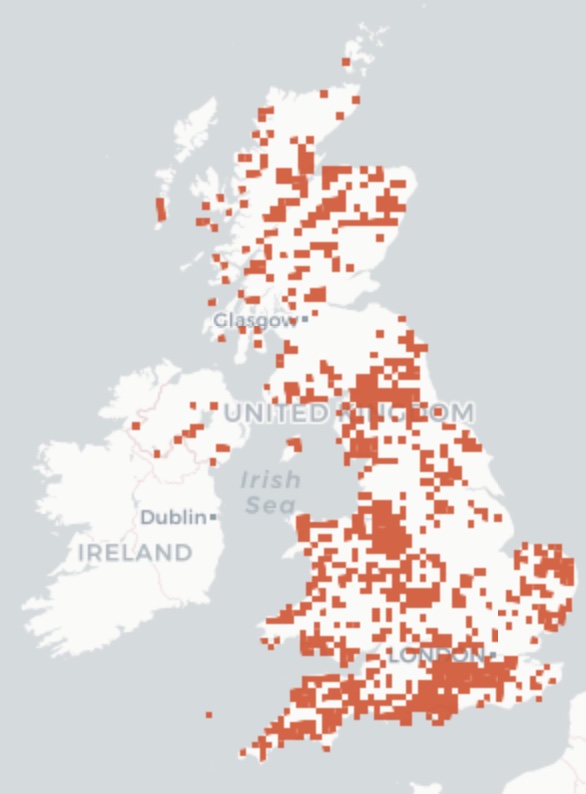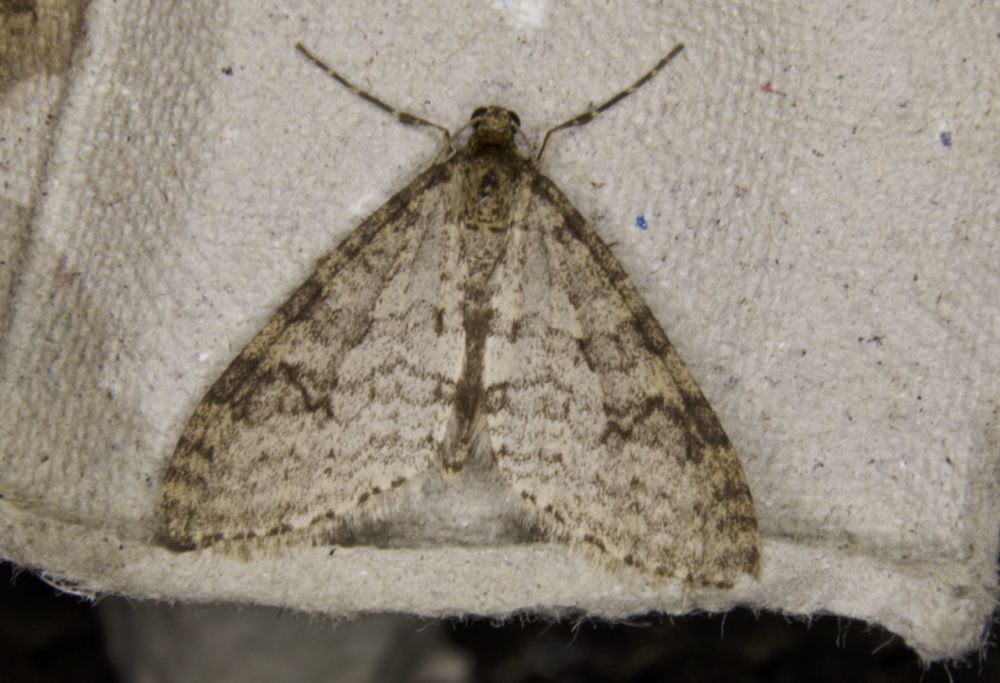Early Tooth-striped
It is always exciting to find a new moth I’ve never seen before whenever I open the moth trap in the morning. And this time was no exception. However, I was only able to take a record shot as it was clinging to the egg carton. It wasn’t interested in being manoeuvred onto my lichen covered twig for a more aesthetic shot and it escaped. So for now I’ll have to content myself with just the one photo.
The Early Tooth-Striped, Trichopteryx carpinata, is a small moth with a wingspan of only 30-34mm (1,2). The base colour is grey, but can be variable taking on a browny grey colouration (1). The broad and rounded forewing have a series of cross bands which can be faint (1,2) but there is a sub-species f.fasciata in which the cross bands are bolder and darker (1,2). It’s not difficult to see where the English name came from.
There is only one generation, with the adults on the wing April and May (1,2). The larvae can be found on the food plants from May to July and then over winter as a pupa. The food plants include Alnus glutinosa (Alder), Salix caprea (Goat Willow), Lonicera periclymenum (Honeysuckle) and Betula pendula (Silver Birch) (1,4,5).
According the The State of Britain’s Larger Moths 2013 Report over the past 40 years the Early Tooth-Striped has increased by 220%. After reading about the continued decline in the populations of many species this is good to hear. It is common throughout the British Isles (6).
The latin name comes from trikhous meaning holding three, and pterux a wing. This alludes to a lobe on the hindwing of the male that looks like a third wing. Carpinata relates to the Hornbeam, Carpinus, however this is not one of the host plants for the larvae (7).
The Early Tooth-Striped, Trichopteryx carpinata, is a small moth with a wingspan of only 30-34mm (1,2). The base colour is grey, but can be variable taking on a browny grey colouration (1). The broad and rounded forewing have a series of cross bands which can be faint (1,2) but there is a sub-species f.fasciata in which the cross bands are bolder and darker (1,2). It’s not difficult to see where the English name came from.
 |
| Distribution Map from NBN |
According the The State of Britain’s Larger Moths 2013 Report over the past 40 years the Early Tooth-Striped has increased by 220%. After reading about the continued decline in the populations of many species this is good to hear. It is common throughout the British Isles (6).
The latin name comes from trikhous meaning holding three, and pterux a wing. This alludes to a lobe on the hindwing of the male that looks like a third wing. Carpinata relates to the Hornbeam, Carpinus, however this is not one of the host plants for the larvae (7).
- Waring,P. Townsend,M. And Lewington,R. (2011) Field Guide to the Moths of Great Britain and Ireland (2nd ed). British Wildlife Publishing.
- UK Moths. https://ukmoths.org.uk/species/trichopteryx-carpinata/. Accessed 08.04.2018.
- Fox, R., Parsons, M.S., Chapman, J.W., Woiwod, I.P., Warren, M.S. & Brooks, D.R. (2013) The State of Britain’s Larger Moths 2013. Butterfly Conservation and Rothamsted Research, Wareham, Dorset, UK.
- HOSTS - a Database of the World's Lepidopteran Hostplants. Natural History Museum. http://www.nhm.ac.uk/our-science/data/hostplants/search/detail.dsml?PK_MainID=24807&PSpeciesqtype=starts+with&PGenus=Lonicera&PFamilyqtype=starts+with&sort=Family&Familyqtype=starts+with&Speciesqtype=starts+with&Genusqtype=starts+with&PGenusqtype=starts+with&Country=British+Isles&beginIndex=5&listPageURL=list.dsml%253FPSpeciesqtype%253Dstarts%252Bwith%2526PGenus%253DLonicera%2526PFamilyqtype%253Dstarts%252Bwith%2526sort%253DFamily%2526Familyqtype%253Dstarts%252Bwith%2526Speciesqtype%253Dstarts%252Bwith%2526Genusqtype%253Dsta. Accessed 08.04.2018.
- Database of Insects & Their Food. Biological Records Centre. http://www.brc.ac.uk/dbif/invertebratesresults.aspx?insectid=8447. Accessed 08.04.2018.
- NBN Gateway. Trichopteryx carpinata. https://species.nbnatlas.org/search/?q=Trichopteryx+carpinata. Accessed 09.04.2018.
- Emmet,A.M. (1991) The Scientific Names of British Lepidoptera: Their History and Meaning. Harley Books: Colchester.




Comments
Post a Comment